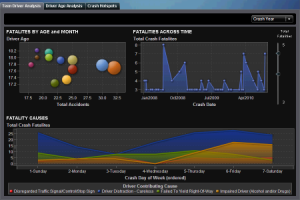Insights from a Town Manager turned SAS Consultant
Last week I had the pleasure of meeting Bill Coleman, a SAS consultant, who works with local government customers across the country helping them improve the efficiency and delivery of governmental services. Bill was kind enough to meet with me and discuss both his private and his public sector work experience and I wanted to share a bit about what I learned.

Interestingly, Bill formerly served as town manager for the Town of Cary (1994-2008). During his tenure as town manager, Bill introduced a performance management and enhancement system to Cary government. Bill’s expertise in data collection and integration—aimed at making government work better for its citizens—continues to be the focus of his work here at SAS.
As a sidebar and a follow up to earlier in-class discussions on how we describe the work of public administrators and the value of the MPA degree, Bill offered—without being prompted—his own view. Bill oftentimes finds himself having to explain to colleagues the function of his former role as town manager, telling folks: “The role of a town manager is to guarantee that key city services and infrastructure are in place for society to function and to ensure a good quality of life for citizens.” I think this is an apt description.
During our conversation I learned that one of Bill’s key aims is to help governments use data to better serve citizens and save money. Bill contributes to a blog, State and Local Connection, which you can access publicly via the SAS website. In one of Bill’s blog postings from earlier this year he provides a short checklist for local officials deciding how to incorporate technology to better communicate meaningful information to citizens. I think the checklist is instructive as it links the power of performance data with the need to keep citizens apprised of local government services and performance. The checklist of considerations follows below:
- Consider a technology solution which can integrate updated performance and cost data;
- Consider a technology that can support a variety of reporting formats based on specific departmental functions;
- Consider technology that can create dashboards and scorecards that visually display performance; and
- Consider a technology that allows the information to be easily understood and displayed on maps for public consumption and transparency purposes.
At the end of our lunch meeting, Bill’s parting words included a general reminder to me that public service—particularly at the local government level—is an extremely rewarding career, provides for a dynamic work environment, is never boring, and always presents important problems that require solutions which may impact hundreds of thousands of people. Indeed, this is welcome perspective as I reflect on my last few weeks at SAS and my future in public administration.


